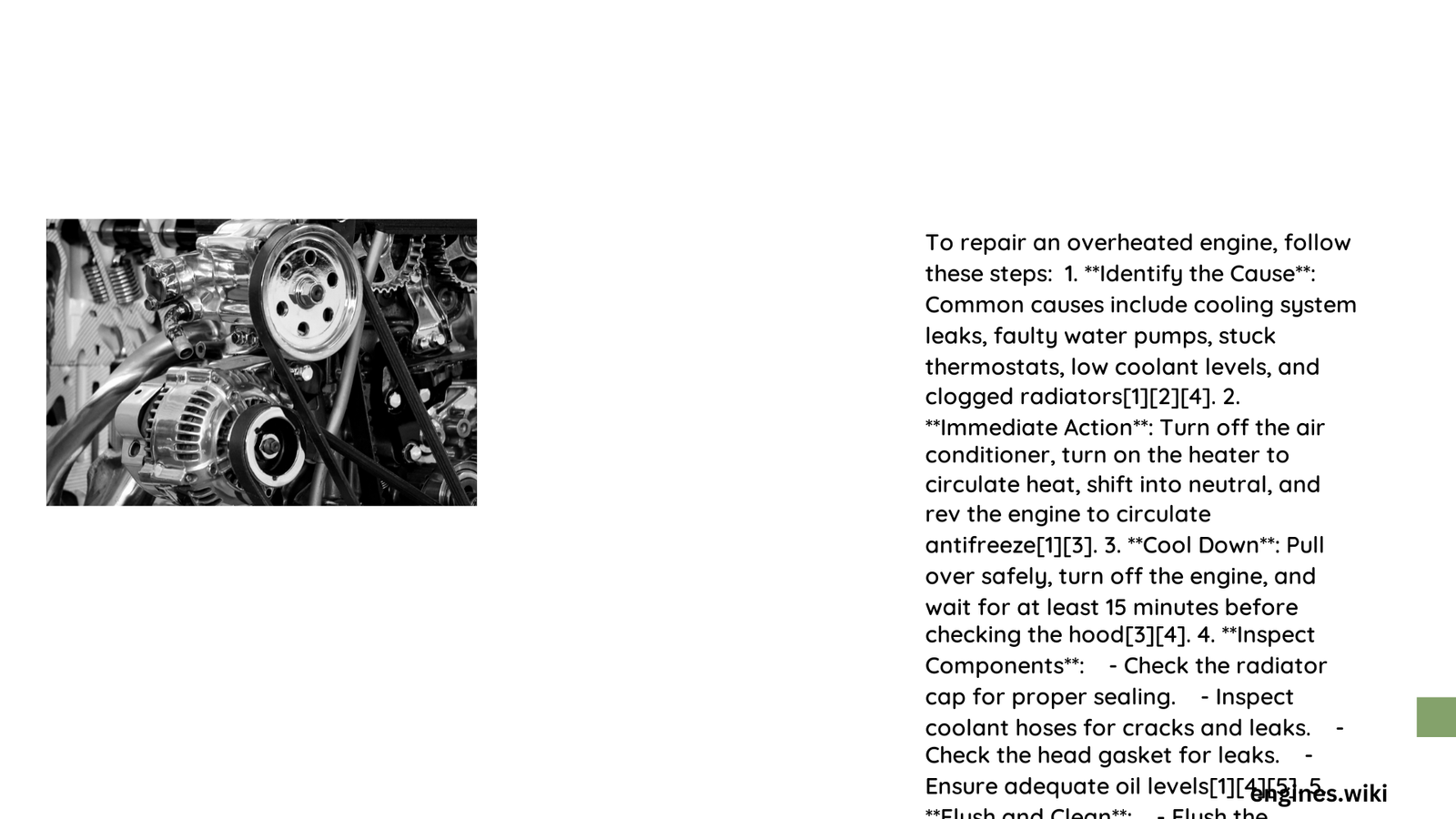When your vehicle’s engine overheats, immediate and precise action can prevent catastrophic damage. An overheated engine signals critical system failures that demand swift, methodical intervention. Understanding the complex interplay between cooling components, temperature regulation, and mechanical stress is crucial for effective repair and long-term vehicle health.
What Causes Engine Overheating?
Primary Factors Leading to Engine Temperature Surge
- Coolant System Failures
- Low coolant levels
- Blocked radiator
- Malfunctioning water pump
- Damaged cooling hoses
Diagnostic Checklist for Overheated Engine
| Symptom | Potential Cause | Recommended Action |
|---|---|---|
| Steam from Hood | Coolant Leak | Immediate Stop and Inspection |
| Temperature Gauge in Red | System Pressure Issue | Check Coolant Levels |
| White Exhaust Smoke | Potential Head Gasket Failure | Professional Diagnostic |
How to Perform Immediate Emergency Cooling

Critical First Steps
- Safely Pull Over
- Turn off air conditioning
- Activate heater (redirects engine heat)
-
Find safe roadside location
-
Engine Cooling Protocol
- Wait 15-20 minutes
- Do NOT open radiator cap immediately
- Wear protective gloves
Detailed Repair Strategies
Coolant System Restoration
- Required Tools
- Coolant
- Funnel
- Pressure tester
- Protective gloves
- Wrench set
Thermostat Replacement Process
- Drain cooling system
- Remove old thermostat
- Clean mounting surface
- Install new thermostat with appropriate gasket
- Refill with manufacturer-recommended coolant mixture
Cost Considerations for Repair
Estimated Repair Expenses
- Minor Repairs
- Coolant top-up: $20-$50
-
Hose replacement: $100-$250
-
Major Repairs
- Water pump: $300-$750
- Head gasket repair: $1,000-$2,500
Professional Maintenance Recommendations
Preventative Measures
- Regular cooling system inspections
- Annual coolant flush
- Monitor temperature gauge
- Address warning signs promptly
Technical Specifications
Typical Engine Temperature Ranges
- Normal Operating Temperature: 195-220°F
- Overheating Threshold: Above 230°F
- Critical Failure Point: 250°F and above
Warning Signs to Watch
Red Flags Indicating Potential Overheating
- Consistent temperature gauge fluctuations
- Steam from engine compartment
- Burning smell
- Reduced engine performance
- Unusual engine sounds
Advanced Diagnostic Techniques
Professional Evaluation Methods
- Pressure testing cooling system
- Compression test
- Leak detection
- Thermal imaging
Final Recommendations
Expert Advice
- Never ignore persistent overheating symptoms
- Use high-quality coolant
- Maintain regular vehicle servicing
- Address minor issues before they escalate
Pro Tip: When in doubt, consult a certified automotive technician for comprehensive diagnosis and repair.
